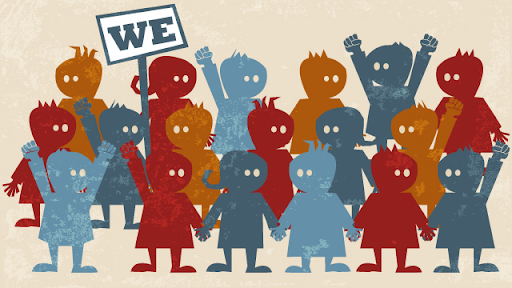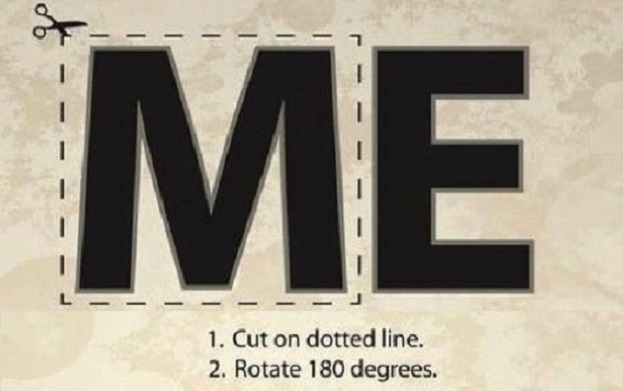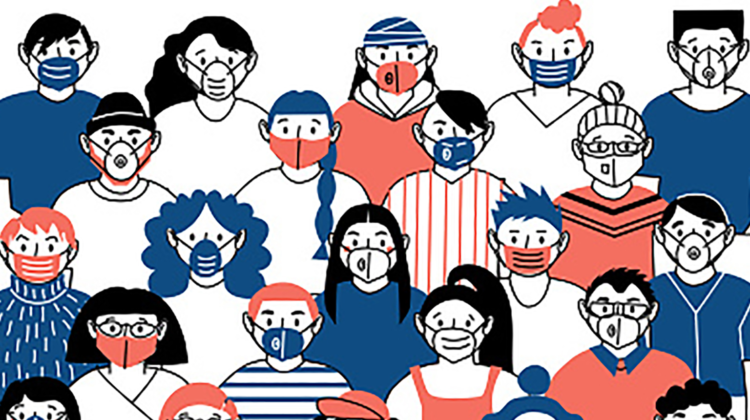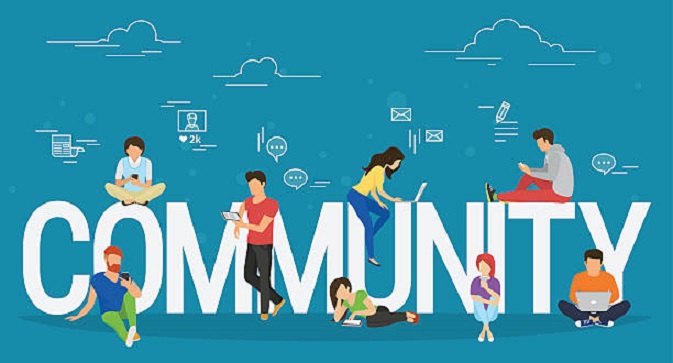A thread on how colleges and universities must effectively utilize research in the social and behavioral sciences to safely re-open their campus to students in the Fall. Specifically, they’ll need to focus on SHARED IDENTITY and SOLIDARITY on campus. #AcademicTwitter 1/
The practical logistics of re-opening will be hard—moving classes to bigger rooms to facilitate distancing, setting asides dorms to be quarantine space, procuring enough hand sanitizer and masks. But know what will be even harder? Getting students to change their behaviors. 2/
Numerous behavioral changes in students will be required to safely conduct day-to-day business on campus amidst the pandemic. Colleges will need to re-teach students how to do everything from navigating the cafeteria to using the library to maintaining distance in classrooms. 3/
To get students to accept this new environment and the plethora of safety rules and prophylactic behaviors, one’s instinct may be to personalize the message and focus on how students can protect themselves. That is the wrong approach according to social science research. 4/
Instead of individualizing the issue, colleges should *collectivize* it. The more the college can get the students to think in terms of “we” instead of “I” the more successful they will be at establishing new behavioral norms on campus. 5/
If new rules and safety procedures are individualized, students will be less likely to comply with them (*I* don’t have to do that because *I* am not at risk) and, at worst, they may actively rebel against them (as any Hall Director or RA will tell you). 6/
But if the issue is collectivized and students have a shared sense of identity and purpose (*we* need to be safe), these “rules” will become group norms that are internally driven and socially enforced by peers (instead of externally policed by administrators). 7/
So how do colleges establish shared identity and shared destiny and get student to think in terms of “we” instead of “I”? First, frame all communication appropriately. As noted above, don’t focus on how students can protect themselves. Focus on how they can protect each other. 8/
Second, involve the students to create solidarity. All students must be deputized into the fight against COVID-19. Each department, program, and office on campus should find ways to involve their students into the cause. Involved students are socially responsible students. 9/
The WWII era is instructive. Contributing to the war wasn’t just fighting on the front lines. It was organizing scrap drives, buying war bonds, wrapping bandages, working in war industries. Everyone contributed and everyone felt connected to a larger national identity. 10/
Citizens were largely compliant during WWII—engaging in rationing, participating in safety drills, contributing to scrap drives—because of their sense of shared identity and shared destiny. That same psychological dynamic needs to be recreated on every college campus. 11/
Students under quarantine, either at home or campus, is inevitable. Every dept should have a special team of undergrad tutors it can dispatch to help quarantined students. Students in each major should be at-the-ready to virtually tutor students who can’t be in the classroom. 12/
Psychology students and faculty can contribute by helping shape behavior on campus. From putting IN and OUT signs on doors (to promote distancing) to wielding social pressure to encourage mask-wearing, psychological nudges can be used to promote socially responsible behavior. 13/
And social science students, with their knowledge of behavior and research methods, can help assess whether these nudges are working via scientific study and observation. These would be great undergraduate research projects and senior theses. 14/
Pre-health students can assist with contact tracing. Grad students are already doing this at some universities. Undergrads can be given appropriate roles as colleges seek to track the movement of potentially-infected students on campus. 15/ https://news.northeastern.edu/2020/04/08/public-health-authorities-need-help-responding-to-covid-19-students-are-answering-the-call-by-picking-up-the-phone/
Health and science students can help their fellow students understand the importance of monitoring their health. Writing a daily log of your temperature. Keeping a journal of any potential symptoms and date of onset. Students should be given campus jobs as health advocates. 16/
Art students should be commissioned to create posters that promote hand washing, social distancing, and maintaining personal health for the safety of the entire community. Use the WWII-era posters as inspiration. Hang them everywhere on campus. 17/ https://www.capnews.ca/news/propaganda-posters-covid19
Music students can write school songs and jingles that promote socially responsible behaviors and that help create a sense of shared identity. Costumers in the Theatre program can use their sewing skills to help make masks. 18/
And masks should be fun! Fun masks help establish norms for wearing them and can promote shared identity. Put your school logo on masks. Or local sports teams. Or each of the four Hogwarts houses and have students sort themselves. Anything to encourage students to wear them. 19/
Students in communication, writing, and the performing arts can help tell the stories of how people on campus have been affected by COVID-19. Personal narratives can be effective ways to highlight the moral obligation we have to each other to act safely and minimize risks. 20/
Students should be paid for this work or, if substantial enough, get college credit for it. Again, the more they feel their work is crucial and important, the more that they and others will internalize the new norms on campus and feel socially responsible toward each other. 21/
Many old campus jobs for students will be gone in this new environment. Replace them with new jobs. Virtual quarantine tutors. Graphic artists to create promotional posters and flyers about health. An army to wipe down door handles, seat backs, and shared space everyday. 22/
Internships that students once had will no longer be possible. Replace them with contact tracing internships, health promotion internships, internships to create apps to help students track their health information and interpersonal contact. 23/
The more you can create solidarity among students, the more you can instill a collective sense of shared identity and shared destiny, the more successful your college will be at re-orienting the norms on campus and launching safety initiatives to combat COVID-19. 24/
Changing on-campus behavior will be difficult but crucial. Make no mistake, colleges are cruise ships on land. Scores of people in close quarters sharing living space, bathrooms, cafeterias, and workspace—a campus can quickly and easily become a wildfire of COVID cases. 25/
Colleges must start this summer and work throughout the school year to get students to buy into this new way of living and working on campus. The more they can get students to invest in these new norms and adopt a shared identity, the safer their entire campus will be. 26/26
Some folks have asked for additional information they can use. Here are sources you can utilize:
1 of 3: On social identity and collective solidarity...
https://www.frontiersin.org/articles/10.3389/fpubh.2019.00141/full
https://psycnet.apa.org/record/2009-17215-017
https://www.gsb.stanford.edu/faculty-research/publications/collective-identity-collective-trust-social-capital-linking-group https://novaramedia.com/2020/03/22/from-me-to-we-in-an-emergency-collectivize-to-survive/
1 of 3: On social identity and collective solidarity...
https://www.frontiersin.org/articles/10.3389/fpubh.2019.00141/full
https://psycnet.apa.org/record/2009-17215-017
https://www.gsb.stanford.edu/faculty-research/publications/collective-identity-collective-trust-social-capital-linking-group https://novaramedia.com/2020/03/22/from-me-to-we-in-an-emergency-collectivize-to-survive/
2 of 3: On norms, collective action, and collective resilience in emergencies in emergencies:
https://www.tandfonline.com/doi/abs/10.1080/10463283.2018.1471948?journalCode=pers20
http://www.ijmed.org/articles/113/download/
https://www.emerald.com/insight/content/doi/10.1108/13639510410566271/full/html
http://udspace.udel.edu/handle/19716/683
https://www.tandfonline.com/doi/abs/10.1080/10463283.2018.1471948?journalCode=pers20
http://www.ijmed.org/articles/113/download/
https://www.emerald.com/insight/content/doi/10.1108/13639510410566271/full/html
http://udspace.udel.edu/handle/19716/683
3 of 3: On social identity and COVID-19 specifically:
https://thepsychologist.bps.org.uk/dont-personalise-collectivise
https://freshthinking.cellohealth.com/post/102g3tq/harnessing-collective-social-identity-in-covid-19
https://blogs.bmj.com/bmj/2020/03/17/how-can-we-involve-communities-in-managing-the-covid-19-pandemic/ https://www.minnpost.com/second-opinion/2020/03/to-change-peoples-behavior-we-need-to-frame-coronavirus-as-a-collective-rather-than-an-individual-threat/
https://thepsychologist.bps.org.uk/dont-personalise-collectivise
https://freshthinking.cellohealth.com/post/102g3tq/harnessing-collective-social-identity-in-covid-19
https://blogs.bmj.com/bmj/2020/03/17/how-can-we-involve-communities-in-managing-the-covid-19-pandemic/ https://www.minnpost.com/second-opinion/2020/03/to-change-peoples-behavior-we-need-to-frame-coronavirus-as-a-collective-rather-than-an-individual-threat/
Here are more creative examples of colleges and universities mobilizing against the COVID outbreak and finding a "renewed sense of purpose" among their faculty, staff, and students. https://www.chronicle.com/specialreport/Colleges-Mobilize-to-Combat/278?cid=FEATUREDNAV
Adding this to the above thread: @Brown_e_Points writes in the @chronicle about ideas being used by colleges to get students to follow COVID safety rules. Some have merit (student ambassadors) but others are probably not productive (signed pledges). https://www.chronicle.com/article/Colleges-Say-They-Can-Reopen/248995/#.XurhOXSH9zs.twitter

 Read on Twitter
Read on Twitter










